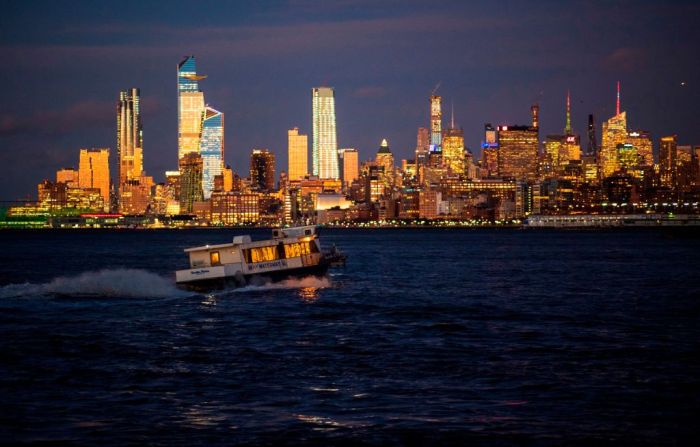If you are a New Yorker there is one thing you know best – commuting takes up a good chunk of your day and one new report breaks down just exactly how much time you spend getting to and from the office. The Center for an Urban Future this week is releasing a report, called “Fast City, Slow Commute,” that examines average commute times for New Yorkers based on where they live and in what industry they work in. According to data from the report, all but one of the city’s 55 “Census-defined” neighborhoods sees average commute times that go over the national average of 26 minutes. About 69 percent of the neighborhoods see an average commute time exceeding 40 minutes. RELATED:NYC reaches a record-high population of over 8.5 million The report is the first to break down commute times for New Yorkers based on the borough and neighborhood they live in.
Out of the ten neighborhoods with the longest commute times, four are in Brooklyn, four in Queens and two are in the Bronx.
From those with the shortest commutes, all but one is in Manhattan.
Based on the data, the neighborhoods with the longest commutes are the Rockaways with 53 minutes, Jamaica with 51 minutes, Brownsville/Ocean Hill with 48 minutes, Flatlands/Canarsie with 48 minutes, Bellerose/Rosedale with 47 minutes, Howard Beach/South Ozone Park with 46 minutes, Kingsbridge Heights/Mosholu with 46 minutes, Soundview/Parkchester with 46 minutes, East Flatbush with 46 minutes and Bensonhurst with about 45 minutes. The report also found that the way people get to work also varies per neighborhood. Even with 59 percent of New Yorkers using mass transit to get to work, residents in 10 of the city’s 55 neighborhoods commuters depend on cars or taxis. These neighborhoods include, three Census-defined neighborhoods in Staten Island, six in Queens, and one in the Bronx.
In six other neighborhoods, more than 20 percent of commuters either walk or ride a bicycle to work. These include Stuyvesant Town, Chelsea/Midtown, the Lower East Side, Greenwich Village/FiDi, Upper East Side and Borough Park. Based on the report, the five neighborhoods with the highest amount of bicycle-riding commuters are the Lower East Side/Chinatown, Greenwich Village/Financial District, North Crown Heights/Prospect Height, Brooklyn Heights/Fort Greene and Park Slope/Carroll Gardens. The report also found that there are a lot of New Yorkers who decided to avoid commuting completely. In six neighborhoods – the Upper West Side, Park Slope/Carroll Gardens, Chelsea/Clinton/Midtown, Stuyvesant Town/Turtle Bay, Greenwich Village/Financial District and Brooklyn Heights/Fort Greene — over seven percent of employed residents mainly work from home. Oddly enough, neighborhoods that are closer to job centers and have the better transit options tend to see the highest share of residents working from home. New Yorkers were also found to more likely commute to work in the borough they live in. In the Bronx, 41 percent of residents work in the borough while 38 percent work in Manhattan. For Queens it is 41 percent versus 35 percent, Brooklyn sees 49 percent versus 37 percent and in Staten Island 52 percent stay in their borough versus 22 percent who opt to go out. From 2000 to 2014, New York City has seen the number of residents working in their home borough increase by 40 percent in the Bronx, 37 percent in Brooklyn, 28 percent in Queens, 23 percent in Staten Island and 18 percent in Manhattan. Queens residents were also found to be the most likely to work outside of the city with a total of 13 percent commuting to jobs beyond the five boroughs.
Along with looking into each neighborhood, the report also analyzed commuting patterns among various industries. For example, it found that in several areas a large number of employees do not live in New York. In the city’s utilities sector, 40 percent commute from outside of the city, 38 percent from the finance and insurance sector; and 30 percent from the government sector.
In general, 79 percent of jobs in New York are filled by residents living in the city.
In regards to commuting times, the finance and insurance industries see the longest average commute with 51 minutes. It is then followed by construction with 50 minutes, public administration with 48 minutes and manufacturing with 48 minutes. RELATED:NYC to receive ‘Hardest Working City’ award Those with the shortest average commutes are residents working in the educational services sectors – with 40 minutes – and then followed by arts and entertainment and real estate with 41 minutes, and finally retail with 42 minutes. At the end of its report, the Center for an Urban Future said that in order to reduce commuting time for its residents, New Yorker City will have to improve and expand its transit options.
The Center added recommendations such as an accelerated schedule for the modernization of the MTA’s signal system; the adoption of the Move NY plan which will introduce tolls on the city’s East River bridges; and reducing fares and integrating payment/transfer of the MetroCard with the LIRR.
Exclusive: New report breaks down commute times for New Yorkers per neighborhood, industry

Getty Images/Mario Tama


















